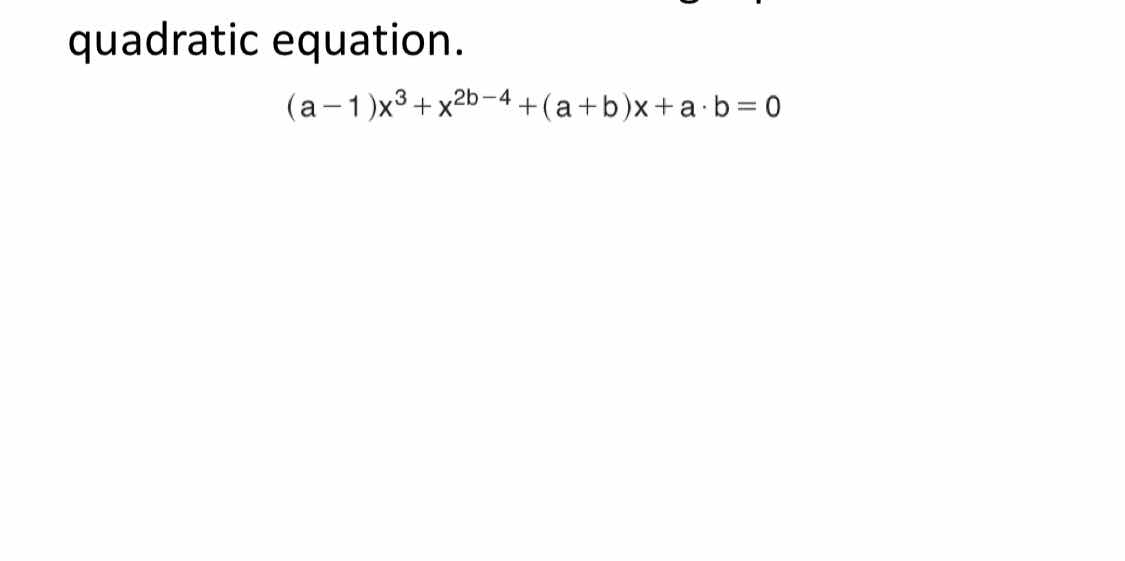Is (a - 1)x^3 + x^{2b - 4} + (a + b)x + a · b = 0 a quadratic equation?

Understand the Problem
The question is asking to determine if a given polynomial expression is a quadratic equation. It provides a complex polynomial and requires analysis to classify its degree.
Answer
The polynomial is quadratic if $a = 1$ and $b \leq 3$.
Answer for screen readers
The polynomial is a quadratic equation if $a = 1$ and $b \leq 3$.
Steps to Solve
-
Identify the degree of the polynomial To classify the polynomial as a quadratic equation, we need to find the highest degree term. A polynomial is quadratic if its highest degree term is 2.
-
Examine each term of the polynomial The polynomial given is: $$(a - 1)x^3 + x^{2b - 4} + (a + b)x + a \cdot b$$ Check the degree of each term:
- The first term is $(a - 1)x^3$, which has a degree of 3.
- The second term is $x^{2b - 4}$. The degree depends on the value of $b$.
- The third term is $(a + b)x$, which has a degree of 1.
- The last term, $a \cdot b$, is constant (degree 0).
-
Determine conditions for quadratic For the polynomial to be quadratic, the highest degree must equal 2. We need to analyze the term $x^{2b - 4}$: To ensure the term $x^{2b - 4}$ does not exceed degree 2: $$2b - 4 \leq 2$$ This simplifies to: $$2b \leq 6$$ So, $$b \leq 3$$
-
Determine if term is quadratic under certain conditions The polynomial can only be quadratic if:
- The term $(a - 1)x^3$ does not contribute, which means $a = 1$ to nullify this term. This gives us $0x^3$.
- Additionally, for $b$ to keep $2b - 4$ at most 2, we already established $b \leq 3$.
- Final conclusion The polynomial can only be classified as a quadratic equation if both conditions are satisfied:
- $a = 1$
- $b \leq 3$
The polynomial is a quadratic equation if $a = 1$ and $b \leq 3$.
More Information
A quadratic equation is defined by having a degree of exactly 2. The degree of a polynomial is determined by the highest exponent of the variable in the expression. Therefore, analyzing each term allows for clear classification.
Tips
- Misidentifying the degree by overlooking higher degree terms.
- Not simplifying the inequalities correctly to find values for $a$ and $b$.
AI-generated content may contain errors. Please verify critical information